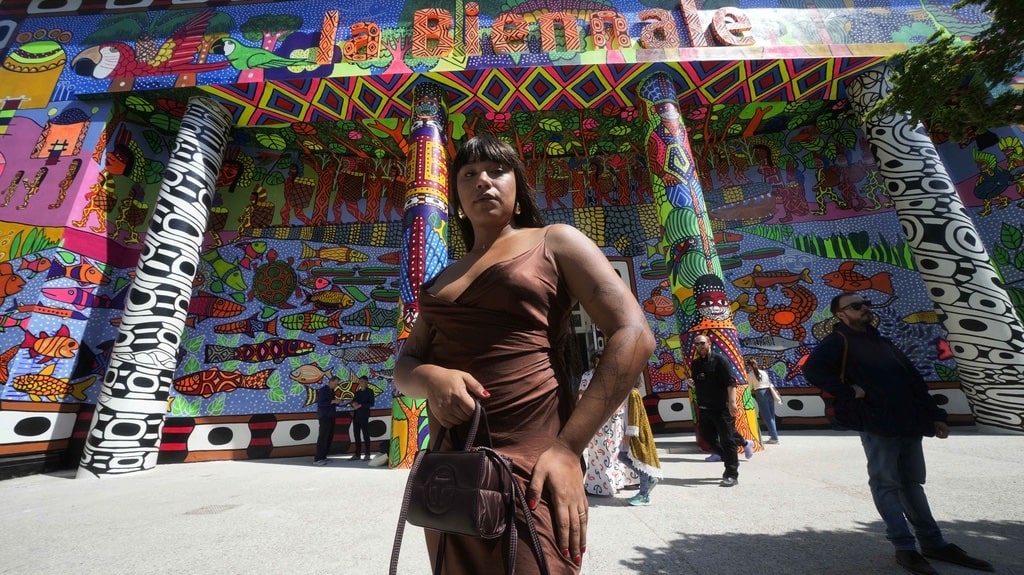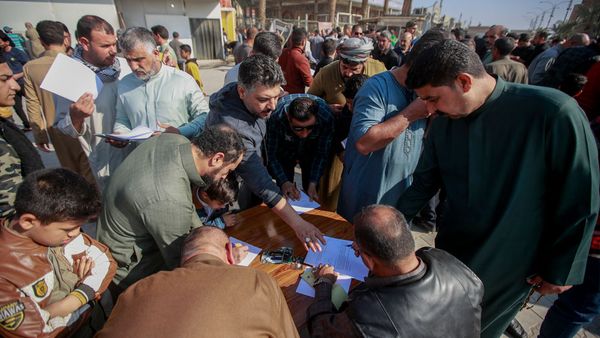June 3, 2011
Report From Cuba: Living Out, Proud, Loud (At Last)
Byron Motley READ TIME: 12 MIN.
In Part 1, photographer & journalist Byron Motley described the sea change in the Castro government toward LGBT Cubans and those with HIV and AIDS, as well as an organization formed with government approval and a member of the Castro family advocating for gay rights. In Part 2 of this EDGE exclusive look at an island nation still officially off limits to Americans, he looks at the lives of ordinary Cubans and how this change in attitude is affecting their daily lives.
"The people in Cuba have learned what homophobia is." These are the words of Cuban National Center for Sex Education (CENESEX) co-director and one of its founders, Camilo Garcia. The lanky, handsome 40-year-old activist has shared a 12-year relationship with his partner, Dr. Alberto Roque, who is also a staunch advocate for LGBT rights and a CENESEX co-founder. "Five years ago (Cubans) didn't know anything about homophobia," Garcia proudly states. "Now, they know it's not a good thing and does not form positive human values."
Similar to any gay and lesbian center in the United States, CENESEX is the place where Cuba's LGBT community can be themselves, find a safe haven from harassment and judgment, and openly discuss issues relevant to their lives. Housed in a three-story former family-owned mansion, the government-owned edifice has been transformed into offices and multi-purpose rooms that the CENESEX staff utilizes to conduct a variety of informational programs, including safe sex classes, health care services and social events.
Yes, Cuba has changed and is changing. Many non-gay Cubans are supportive of the efforts of the anti-homophobic movement. Others, not unlike those anti-gay critics in the USA, are convinced the homosexual movement has an underlying "agenda."
Arguments heard from religious zealots and like-minded people on the streets of Havana echo conservatives on the streets of America; "It's against God's will." "Two men kissing is disgusting." "The gays are trying to take over."
Officially & Unofficially, Homophobia No Longer Status Quo
"It is no longer politically correct to be homophobic in Cuba," Garcia notes. "You now hear people saying 'I am not homophobic,' just like you might hear people say 'I'm not racist,' This does not necessarily mean that they have overcome their prejudices, but it expresses that they have received the message that discrimination due to sexual orientation and diversity is harmful."
Pedro Monzon, the current Cuban Ambassador to Australia, suggests that attitudes in Cuban society toward homosexuality really began to shift after the release of the 1994 award-winning yet controversial motion picture "Strawberry and Chocolate." "That film was an important beginning," Monzon says. "Many of us who had never thought about the plight of gay Cubans changed our way of thinking after that film."
The time for change is long overdue, he adds. "Many people do not know that there were transsexuals who fought in Revolution alongside the other guerrilla fighters. So the advances being made with regards to LGBT issues in our society are timely and good."
Gay Scene Still Underground
Still, an American or European visitor, used to a more "open" lifestyle of gay bars, Internet chat room billboards, sex blogs, here!TV, and gay high schoolers prancing around on a hit TV show like "Glee," should not expect to find the same openness in Cuba. Amongst the vintage automobiles and decaying buildings, Cuba's "gay scene" is still underground at best.
In Havana, there are three main gay hangouts. Along the north-shore of the island is a 3-mile stretch of seawall known as the Malec�n. For centuries, it has been a respite for families, lovers and tourists who come to swim, fish, picnic, relax, smooch and party.
At the midsection of the Malec�n, near Vedado (the commercial center of Havana), gays and lesbians congregate. Within this pocket of roughly 50 yards, at any given day or night, young gays sip rum, blast boom boxes, play guitars and chitchat.
Heading up La Rampa (also known as Avenue 23), a stone's throw away from this gay niche along the Malec�n, one will find two gay bars, the Bim Bom and Piropo. More convenient store than bar, the Bim Bom is more or less Cuba's equivalent of a scaled-back 7-11. Situated on a dimly lit street corner, in the shadow of the historic Hotel Nacional, the Bim Bom is swarmed on Friday and Saturday nights with hundreds of mostly gay men and transsexuals.
This no-frills gathering spot boasts no loud music, no strobe lights and no dance floor, just gay Cubans socializing and enjoying the company of one another. A block away, the more intimate Piropo is a popular smoke-filled hang out that has the feel of a caf�, although no food is served. Piropo is also better lit and attracts more of a middle-aged crowd.
A Gay ’Fiesta’
By law, Cubans are not supposed to fraternize with foreigners. But they do.
Cubans can be arrested and thrown in jail for the night if the police catch them interacting with foreigners. More egregious violations, like openly discussing politics with tourists, visiting a foreign guest in hotel rooms, accepting gifts, or appearing to be a prostitute (jinetero), can result in prison sentences up three years.
In more recent years (mainly through the work of CENESEX), the police have relaxed this policy to a degree. Still, while hanging out at the Bim Bom, one will note that a small police presence is always lurking and watching.
The closest thing to a gay club in Havana is the "fiesta" which is held every Saturday night starting around 11pm. In the past, the fiesta would circulate weekly to different locations to elude harassment from the Policia. In recent years, indicating a remarkable shift in attitudes toward homosexuals, "the fiesta" has settled in either of two open-air parks: one near Parque Lenin; the other close to the notorious Revolutionary Square.
Cover charge for Cubans costs less than a dollar. Foreigners might be charged as much as 15. The music blasts everything from Lady Gaga to Marc Anthony while patrons party into the wee hours of the night. There are no advertisements for Absolut Vodka or any other capitalist enterprise at a fiesta. As a matter of fact, alcohol is mostly limited to beer and rum. There are no comfy sofas or chairs or many of the trappings you would find in moderately trendy bars in the U.S.
Santa Clara, Cuba’s San Francisco
Cuba's "gayest city" is Santa Clara (a 4-hour drive southwest of Havana). Here you will find Cuba's only government-authorized gay establishment, El Mejunje. Recently celebrating its 25-year anniversary, the small open-air venue is an entertaining paradise for the LGBT community. Famous for its outlandishly flamboyant drag shows and party atmosphere, this is the place where gays, lesbians and their friends can be themselves without the fear of harassment from non-gays.
As gay and heterosexual Cubans work to embrace their differences, generations of social and emotional hurdles must be overcome in order to combat ignorance and intolerance. One heterosexual female worker who is supportive of the gay movement admitted, "I would like to work with CENESEX and help with their programming and efforts. I believe the work is important and needed. But, I'm afraid if I do, people will think I'm a lesbian."
Although frustrating, such thinking is understandable in a movement that is still in its infant stage. However, a young heterosexual professor at the University of Havana has pushed past those concerns and has taken up the reigns as a staunch gay rights advocate. "I support gay rights" said the handsome, fresh-faced, 30-something year old scholar. "I do it first for homosexuals, but also for myself. It's my right to struggle for who I think I should struggle for."
Once he began his career as a professor, he says he had to face difficult moments with students and teachers who had divided opinions on the topic of homosexuality. "If I defended the rights of free sexual orientation, I was accused of being homosexual," he relates. "Both straights and gays kept asking me, 'So when are you coming out of the closet?'"
"Initially," he adds, "I thought that I had lost the key. I felt rejected by everybody. But, in my heart I knew that if I did not support gay rights, my conscience (would be) trapped." Becoming more thoughtful and introspective, he realized that "homophobia affects us all. It limits our lives. It prevents our human and professional development. Everyone has the right to determine their sexual preferences without risking their own happiness."
Out-and-Proud Transsexual
Cuba's first male-to-female transsexual is Mavi Suzell, a stout yet handsome woman who seems very comfortable with her identity and her place in gay Cuban history. The 50-year-old Suzell said that her operation on May 22, 1988, not only changed her sexual identity but her life as well.
"Before my procedure, I suffered a lot emotionally," declares Suzell. "Now I am fully accepted as I was not before. I have the admiration of people who before didn't understand what I was all about." Reflecting on her former self, Suzell explains, "There was a period of time where I suffered a lot, and I was even rejected by the gay community. They used to say I was crazy. They had no contact with this type of situation (so) they didn't understand it. They told me I could never achieve what I wanted and that I couldn't live in this way. Since my procedure, I have been able to achieve things that I could not otherwise have achieved. And I have achieved more understanding from other people."
The fact that Suzell's surgery took place at all is even more astonishing considering that the year before her operation, the Human Rights Watch reported that the Cuban government had heightened its harassment of homosexuals by "raiding nightclubs known to have gay clientele and allegedly beating and detaining dozens of patrons." 1
Soon after Suzell's procedure, government bureaucracy and extreme homophobia fueled by age-old taboos halted sex change operations. However, again thanks to the work of CENESEX, others like Suzell, wishing to undergo a change in sexual identity, can do so lawfully and with full financial support of Cuba's state run health care system.
Another transsexual, "Raven", who is hoping to someday undergo the change, had a harder struggle embracing her identity. She admitted, "When I first discovered my identity as a teenager, I couldn't go to public acts (dressed as a female) because I would be turned away. People were very disagreeable with me and made my life miserable. There was period of time where I suffered and lot. I was even rejected by the gay community because they used to say I was crazy. They didn't understand me. They told me I could never achieve what I wanted and that I couldn't live in this way."
Pausing, her eyes opened wide and a smile warmed her expression, "Ironically, my family always accepted my situation even from the time I was a child. But now, I'm living a fuller life and, yes, I'm happy."
Life at Home & on the Street
Knowing that most Cubans live at home with their families, I figured it must be difficult for those who are in relationships, or those who want to hook up for a sexual rendezvous, to find "alone time", especially when they are not out to their families. While speaking with a young gay couple, I just had to ask the obvious: "When and where do you have sex?" The reply from one was succinct, "It's difficult to get private space, but we manage."
One afternoon, I encountered another gay couple in their late-teens who have been dating for a month. In their newfound attraction and excitement the pair could not keep their hands off each other. Walking through the streets of Havana with them provided a study of just how far Cuba has truly come.
The lovebirds held hands and were quite affectionate with one another, often stealing lingering kisses on the lips, in broad daylight.
Having visited Cuba many times, I was stunned by their confidence and unconcern. I was also amazed there were no looks of disgust, no double takes, no jeers, and not one snicker from passersby. In fact, the people who noticed the gay couple didn't look at them any differently than if they had been a young heterosexual couple.
As we stopped in the doorway of an apartment complex, I asked the young lovers if they would pose for some photos. As they snuggled into each other's arms and gazed longingly at each other, I noticed a woman across the street, standing on her veranda, with a direct bird's eye view of the boys. Nervous that she might shout out some homophobic slur or alert the police, I girded myself for some kind of scene and snapped as fast as I could. But she calmly stood on her terrace and watched the photo shoot as if this was an everyday occurrence. She seemed completely unfazed. As we walked away, I glanced back to gauge her reaction, seeing only a look of curiosity.
Two lesbians, who are 30 and 31 years old respectively, have been together five years. They live openly with one of the women's family. She smiled, "We are an unusual couple for Cuba I guess you could say. My family is supportive and knows fully of our relationship. We have our own bedroom and are affectionate with one another in front of the family. They don't have a problem at all." The other partner chimes in laughingly, "Yes we are unusual to say the least"!
On the flip side, there are probably many more stories that reflect the realities of Alejandro, a 30-something bi-sexual man who lives a closeted life, mainly for fear of backlash from his family and employer. Working at a supermarket in the outlying town of Artemesia (a 45-minute drive from Havana), the gangly man likes to visit Havana to get lost in the anonymity of the big city. "Here I don't have to look over my shoulder and wonder if people know about me. It's a great distraction from the everyday rut of living in a smaller town."



